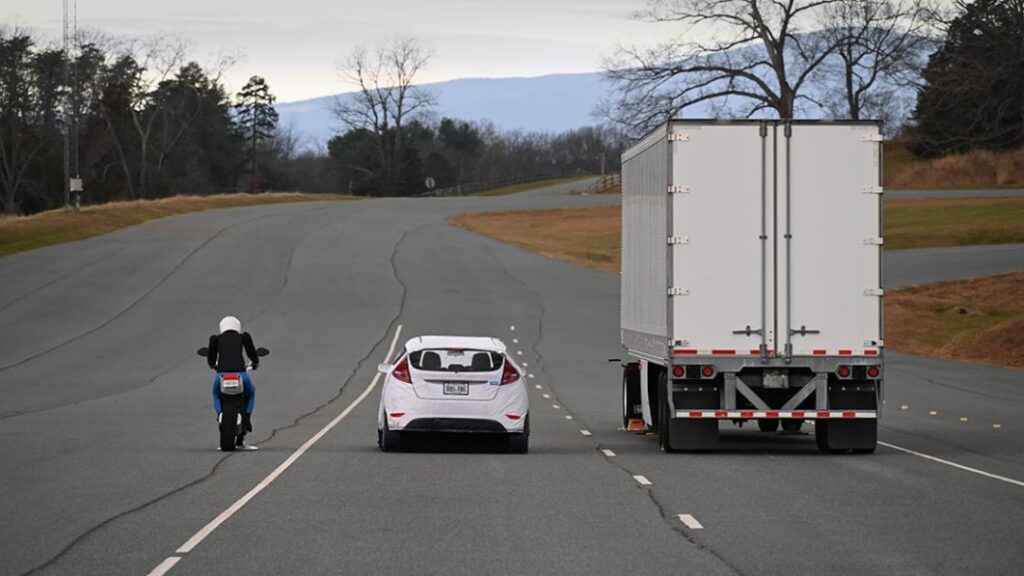IIHS: Crash prevention systems need to be better at avoiding motorcycles, trucks

Most new cars come with advanced driver assistance systems (ADAS) that help prevent collisions and detect dangers on the roadways. Front crash prevention systems form a significant chunk of those systems, with features like automatic emergency braking and forward collision warnings being two of the most common ADAS features today. While they absolutely save lives and help reduce collisions with other vehicles, new research from the Insurance Institute for Highway Safety (IIHS) suggests they could do more to prevent collisions with large trucks and motorcycles.
The IIHS study found that front crash prevention systems cut collisions with medium- and heavy-duty trucks by 38 percent and motorcycles by 41 percent. At the same time, the systems’ effectiveness jumped to 53 percent with rear-end crashes involving passenger vehicles.
IIHS’ VP of Research, Jessica Cicchino, noted that the reductions are promising across the board, but more can be done. “These reductions are impressive for all vehicle types, but the safety benefits could be even larger if front crash prevention systems were as good at mitigating and preventing crashes with big trucks and motorcycles as they are with cars.” Improvements to ADAS and front crash prevention systems could cut as many as 5,500 truck crashes and 500 motorcycle crashes each year.
Motorcycles and trucks present challenges to crash prevention systems and can be physically more dangerous to the people involved. Smaller two-wheel vehicles don’t have the structure and protection offered by cars and other vehicle types, and they’re harder to see. That makes collisions more likely and deadlier when they do occur. Large trucks are the opposite scenario, as they’re generally more dangerous to people in other vehicles.
Earlier this year, the NHTSA released a proposal that would mandate automatic emergency braking and pedestrian detection for all new light-duty vehicles, which would raise the baseline performance standard for new systems with improvements to high-speed effectiveness. Tesla has also struggled with large stationary vehicles on road sides, as its vehicles have been involved in crashes with emergency irst responder vehicles and large trucks while operating in semi-autonomous driving modes.



